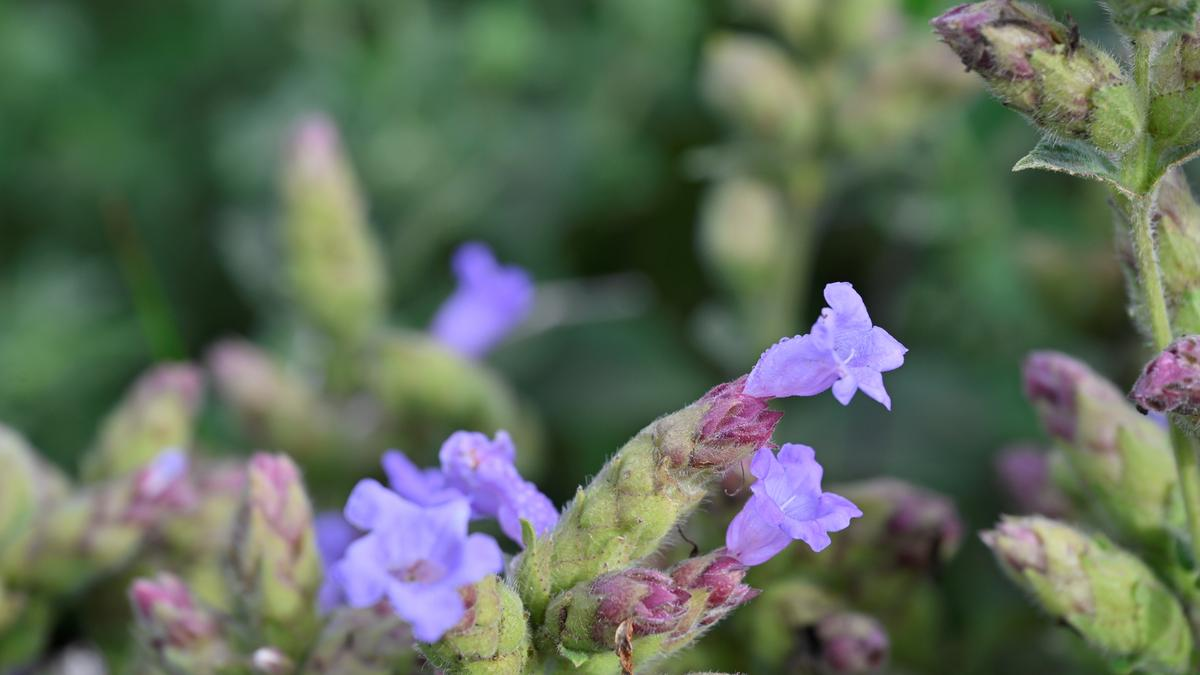International Relations
Engagement Without Recognition: India's Taliban Policy
For Prelims: Taliban, Northern Alliance, Golden Crescent, Heart of Asia, SCO, Moscow Format
For Mains: India-Afghanistan Relations, Significance of India-Afghanistan Relations, Major Challenges facing India-Afghanistan Relations
Why in News?
Afghanistan's Foreign Minister visited New Delhi, marking the highest-level Taliban visit since 2021, prompting India to upgrade its Kabul technical mission to a full embassy, without formally recognizing the Taliban government, maintaining its policy of “engagement without recognition.”
What is India’s “Engagement Without Recognition” Approach to the Taliban Government?
- Engagement Without Recognition: Recognising a government (de jure) and engaging with a regime (de facto) are separate political acts governed by international law.
- India does not accept the Taliban’s de jure legitimacy but maintains functional diplomatic channels through its embassy in Kabul.
- Purpose of Engagement: To coordinate humanitarian aid, development projects, and political dialogue while safeguarding India’s strategic and security interests.
- International Law Basis: This approach aligns with Vienna Conventions on Diplomatic Relations (1961) and Consular Relations (1963), which allow embassies to function without formal recognition of the host government.
- Precedents: India has used similar models for Taiwan and the Myanmar junta, engaging without recognising their governments formally.
Global Approach Towards the Taliban Government in Afghanistan
- Recognition of governments is a political act separate from operating an embassy.
- In 2024, the UN rejected Afghanistan's claim to its seat for the fourth consecutive year. The Taliban government must meet UN requirements on forming an inclusive government, dismantling terrorist groups, and respecting human rights, particularly women’s rights, but it has failed on all three counts.
- Countries like Russia, China, UAE, and Uzbekistan have engaged the Taliban through mixed approaches with some granting formal recognition, others adopting engagement-without-recognition.
Why is India Engaging with the Taliban Despite Non-recognition?
- Positive Stance Towards India: Taliban have maintained relatively good relations, emphasizing that Kashmir is a bilateral matter with Pakistan.
- Strategic First-Mover Advantage: Early engagement would enhance India’s diplomatic influence before countries like China or Pakistan follow Russia’s lead.
- Balancing Regional Powers: Engagement helps counter China-Pakistan influence in Kabul and strengthens India’s strategic footprint.
- India’s approach underscores commitment to Afghanistan’s sovereignty while limiting Pakistan’s regional leverage.
- Protecting Assets: India has invested over USD 3 billion in Afghanistan, and engagement ensures the safety of its development projects.
What is the Significance of India-Afghanistan Relations?
- Security and Counterterrorism: The Taliban’s assurances to prevent Afghanistan from being used as a base for anti-India groups, including condemnation of terror attacks, enhances India’s confidence in Afghanistan as a strategic partner.
- Earlier, Taliban assisted India in negotiating with the hijackers of Indian Airlines Flight 814 in 1999, facilitating the safe return of the hostages.
- Development and Reconstruction: India in Afghanistan has invested over USD 3 billion in humanitarian aid and infrastructure, including the Salma Dam, Zaranj-Delaram highway, Kabul’s Parliament building, hospitals, and power substations.
- Humanitarian initiatives during droughts and Covid-19 further demonstrate India’s soft power commitment and long-term engagement.
- Economic Engagement: Afghanistan’s mineral wealth, valued at USD 1–3 trillion, presents significant opportunities for India in mining and trade.
- Historical support for the Northern Alliance and India’s role as a major development partner highlight its sustained strategic interest in the region.
- Connectivity and Regional Trade: India focuses on key connectivity projects like the Turkmenistan-Afghanistan-Pakistan-India (TAPI) gas pipeline and Chabahar Port (Iran-Afghanistan-India corridor), facilitating trade, regional integration, and bypassing Pakistan.
- Strengthening these links enhances India’s access to Central Asia and reduces Pakistan’s strategic leverage.
What are the Challenges Facing India-Afghanistan Relations?
- Security and Terrorism: Terrorism remains a key concern due to the Taliban’s historic links with groups like Lashkar-e-Taiba and Jaish-e-Mohammed.
- Despite Taliban pledges not to allow Afghan soil for anti-India activities, doubts persist because of incomplete disengagement from militant outfits.
- Pakistan’s Influence: Pakistan’s Inter-Services Intelligence (ISI)’s historical support to the Taliban and proxy groups complicates peace, while the Taliban’s non-action against Tehrik-i-Taliban Pakistan (TTP) insurgents risks cross-border instability.
- Political Instability and Governance: The Taliban’s non-democratic rule, lack of women’s rights, minority protections, and suppression of dissent challenge India’s values-based engagement..
- Economic and Infrastructure Hurdles: Afghanistan’s poverty, security concerns, Taliban governance, and sanctions hinder India’s investments in projects like the Salma Dam and Kabul Parliament, though trade via Chabahar Port and mining sector engagement offer cautious optimism.
- Drug Trafficking: As the largest opium producer, Afghanistan fuels regional instability.
- Narcotics impact India (e.g., Punjab drug crisis) and fund terrorist activities, making cross-border control a key challenge.
What Steps can Strengthen India’s Ties with Afghanistan?
- Pragmatic Diplomatic Engagement: Maintain full embassy and regular exchanges without immediate political recognition; continue humanitarian aid to balance strategic necessity with moral responsibility.
- Counter-terrorism Cooperation: Institutionalise intelligence sharing, joint investigations, capacity building for Afghan security forces, and anti-narcotics collaboration in Golden Crescent regions.
- Economic Connectivity & Geoeconomic Options: Boost trade and investment via Chabahar Port, India-Afghanistan Air Freight Corridor, and secure resource-sector partnerships like Hajigak.
- Multilateral & Regional Cooperation: Leverage Heart of Asia, Shanghai Cooperation Organisation (SCO), Moscow Format, UN, and partner countries for coordinated aid, reconstruction, and counterterrorism initiatives.
- Advocacy for Social & Human Rights: Promote women’s education, minority rights, and political inclusivity; expand scholarships, vocational training, cultural exchanges, and media outreach.
Conclusion
India’s engagement with the Taliban balances strategic, humanitarian, and economic interests without granting formal recognition. While challenges like security risks, Pakistan’s influence, and governance issues persist, sustained, principled engagement ensures India remains a key partner in Afghanistan’s stability, development, and regional connectivity.
|
Drishti Mains Question: Examine India’s “engagement without recognition” policy towards the Taliban government and its strategic rationale. |
Frequently Asked Questions (FAQs):
1. What is India’s “Engagement Without Recognition” approach to the Taliban?
India maintains functional diplomatic channels via its embassy in Kabul without formally recognizing the Taliban government, ensuring aid, dialogue, and strategic interests continue.
2. Why is India cautious in recognizing the Taliban government?
Moral concerns, human rights violations, and the potential strengthening of extremist ideologies, along with geopolitical implications with Pakistan, deter formal recognition.
3. Which steps can strengthen India-Afghanistan ties?
Pragmatic diplomacy, counterterrorism cooperation, economic and trade connectivity, multilateral engagement, and advocacy for social and human rights.
UPSC Civil Services Examination, Previous Year Questions (PYQs)
Prelims
Q. Consider the following countries: (2022)
- Azerbaijan
- Kyrgyzstan
- Tajikistan
- Turkmenistan
- Uzbekistan
Which of the above have borders with Afghanistan?
(a) 1, 2 and 5 only
(b) 1, 2, 3 and 4 only
(c) 3, 4 and 5 only
(d) 1, 2, 3, 4 and 5
Ans: (c)
Mains
Q. The proposed withdrawal of the International Security Assistance Force (ISAF) from Afghanistan in 2014 is fraught with major security implications for the countries of the region. Examine in light of the fact that India is faced with a plethora of challenges and needs to safeguard its own strategic interests. (2013)
International Relations
India- MERCOSUR Preferential Trade Agreement
For Prelims: Preferential Trade Agreement , MERCOSUR, World Trade Organization, European Union
For Mains: India’s Preferential Trade Agreements, Strategic trade diversification and multipolar foreign trade policy
Why in News?
India and Brazil have announced a joint declaration to expand the India–MERCOSUR Preferential Trade Agreement (PTA), strengthening India’s trade ties with Latin America, especially within the Mercosur bloc of Brazil, Argentina, Uruguay, and Paraguay.
What are the Key Highlights of India–Brazil Joint Declaration for Deepening of India-MERCOSUR PTA?
- India–Brazil Joint Declaration: Both nations agreed that the PTA will be significantly broadened to include both tariff and non-tariff issues, allowing more trade to benefit from preferential access.
- A technical dialogue will soon begin, led by the Joint Administration Committee established under Article 23 of the PTA. This will help define the scope and modalities of the expanded deal.
- The move aims to broaden tariff preferences and scale up bilateral trade between India and Brazil from the existing USD 12.2 billion to USD 20 billion by 2030.
- India - MERCOSUR PTA: India signed a Framework Agreement in 2003 to facilitate trade negotiations through reciprocal tariff preferences, followed by a PTA in 2004, which was implemented in 2009 in accordance with World Trade Organization (WTO).
- A PTA allows countries to give preferential tariff access on certain products, unlike FTAs, which are broader and cover more goods.
- India - MERCOSUR PTA is implemented through five annexes, covering tariff concessions for Indian and MERCOSUR products, rules of origin, safeguard measures, and a dispute settlement mechanism.
- These annexes provide the framework to operationalise and manage trade under the agreement.
- It currently covers around 450 tariff lines, providing limited duty concessions.
What is MERCOSUR?
- About: MERCOSUR (Southern Common Market) is a regional trading bloc in Latin America, initially established by Argentina, Brazil, Paraguay and Uruguay, and subsequently joined by Venezuela and Bolivia.
- It was established in 1991 under the Treaty of Asuncion with the goal of promoting free movement of goods, services, capital, and people among member states.
- The Treaty of Ouro Preto (1994) gave MERCOSUR a legal identity and established it as a customs union, allowing common external tariffs and coordinated trade policies.
- The bloc’s headquarters are in Montevideo, Uruguay, and its official languages are Portuguese and Spanish.
- Significance: MERCOSUR is the fourth largest integrated market after the European Union (EU), North American Free Trade Agreement (NAFTA), and Association of Southeast Asian Nations (ASEAN).
- MERCOSUR countries form the world’s 6th largest economy with a total population of 270 million people.
What is the Significance of India-MERCOSUR PTA?
- Strengthening South–South Cooperation: As key members of BRICS, G20, and IBSA, India and Brazil are enhancing trade and strategic ties, reinforcing South–South Cooperation.
- India’s engagement with PTAs in emerging Latin American economies is advancing its multipolar foreign trade strategy.
- Enhanced Market Access: Wider tariff concessions will make Indian products more competitive in Latin America, reducing dependence on Chinese and European suppliers.
- In FY 2024-25, India’s exports to MERCOSUR were USD 8.12 billion, with imports at USD 9.36 billion, mainly from Brazil.
- Strategic Trade Outreach: Deepening ties with MERCOSUR complements India’s push for Free Trade Agreements (FTAs) with the EU, the US, and Indo-Pacific partners, diversifying its trade portfolio.
- Agriculture and Energy Opportunities: India can benefit from agricultural imports, energy resources, and raw materials, while exporting pharmaceuticals, engineering goods, and IT services.
What are the Challenges in Expanding the India-MERCOSUR PTA?
- Agricultural Protectionism: MERCOSUR countries, especially Brazil and Argentina, have strong protection for their agricultural sectors, limiting India’s access for goods like sugar, pulses, and dairy.
- Economic Asymmetry: MERCOSUR economies are heavily commodity-export oriented, while India is more diversified in manufacturing and services.
- This asymmetry makes it hard to agree on reciprocal concessions without deepening trade imbalances.
- Consensus Among Member States: Unlike bilateral FTAs, all MERCOSUR countries must approve product lists, tariff lines, and rules of origin, slowing decision-making.
- Infrastructure and Logistics Constraints: Even with tariff concessions, trade flows can be limited by transportation, shipping, and supply chain inefficiencies between India and South America.
- Non-Tariff Barriers (NTBs): Differences in standards, technical regulations, and customs procedures can restrict trade even if tariff concessions are granted. Harmonizing NTBs is often more challenging than tariff negotiations.
What Measures can Strengthen India-MERCOSUR PTA?
- Deepening Product Coverage: Expand the PTA beyond 450 tariff lines and prioritize mutually beneficial sectors such as IT, clean energy, and automotive components.
- Addressing Non-Tariff Barriers: Align standards, technical regulations, and sanitary measures with WTO norms, streamline customs procedures, and strengthen digital trade facilitation to boost ease of doing business.
- Agricultural Negotiations and Market Access: Secure phased access for pulses, rice, and processed food while respecting MERCOSUR sensitivities.
- Explore cooperation in agri-technology, food processing, and joint value chains.
- Strategic Alignment with South-South Cooperation: Leverage India-Brazil ties under BRICS and IBSA (India, Brazil and South Africa) for coordinated policy support and promote investment linkages alongside tariff negotiations.
Conclusion
The expansion of the India-MERCOSUR PTA offers a strategic opportunity to deepen trade, diversify markets, and strengthen South–South cooperation. Addressing non-tariff barriers and agricultural sensitivities will be key to its success.
| Read more: India's Diplomatic Shift to Latin America |
|
Drishti Mains Question: Q. Critically examine the significance of expanding the India-MERCOSUR Preferential Trade Agreement in India’s foreign trade strategy. |
Frequently Asked Questions (FAQs)
1. What is MERCOSUR?
MERCOSUR (Southern Common Market) is a Latin American trading bloc established by Brazil, Argentina, Paraguay, and Uruguay in 1991 to promote free movement of goods, services, capital, and people.
2. When was the India–MERCOSUR PTA signed and implemented?
The PTA was signed in 2004 following a Framework Agreement in 2003 and came into effect in 2009, covering around 450 tariff lines.
3. Why is the India–MERCOSUR PTA significant for India?
It strengthens South–South cooperation, enhances market access in Latin America, supports exports in pharmaceuticals, engineering, and IT, and diversifies India’s trade portfolio beyond China and Europe.
Indian Economy
Decarbonising Indian Railways
For Prelims : Hydrogen trains, Rail electrification, Renewable energy, Green finance, National Green Hydrogen Mission, COP26 Panchamrit targets.
For Mains: Sustainable transport, Green hydrogen adoption, Climate finance
Why in News?
In July 2025, the Indian Railways successfully conducted a trial run of India’s first hydrogen-powered coach at the Integral Coach Factory (ICF), Chennai. It reflects the Indian Railways’ broader ambition of achieving net-zero carbon emissions by 2030.
What Key Initiative Has Indian Railways Taken for a Low-Carbon Future?
- Electrification and DFCs: Nearly 45,000 km of broad-gauge track electrified in the past decade; 98% of the broad-gauge network now runs on electricity, aimed at reducing diesel reliance and cutting GHG emissions.
- Efforts are underway to increase the rail freight share to 45% by 2030 through Dedicated Freight Corridors (DFCs).
- Renewable Energy Integration: A total of 756 MW of renewable capacity commissioned - including 553 MW solar, 103 MW wind, and 100 MW hybrid.
- Over 2,000 railway stations now run on solar power; several have received the BEE “Shunya” net-zero certification.
- Hydrogen for Heritage Initiative: Under this programme, 35 hydrogen-powered trains will be introduced, including the one successfully tested at ICF in July 2025.
- This initiative aligns with the National Green Hydrogen Mission, promoting hydrogen as a clean fuel alternative for non-electrified routes.
- Climate Finance Support: Since FY2023, India has issued ₹58,000 crore in sovereign green bonds, with ₹42,000 crore directed to transport electrification and rail expansion.
- The Indian Railway Finance Corporation (IRFC) plays a key role, including a USD 500 million green bond (2017) and a ₹7,500 crore loan to NTPC Green Energy for renewable capacity building.
- The World Bank has also extended a USD 245 million loan under the Rail Logistics Project to enhance freight efficiency.
What are the Key Significance of Decarbonizing Indian Railways?
- Environmental Impact: The hydrogen initiative, along with large-scale electrification, could help prevent 60 million tonnes of CO₂ annually, equal to removing 13 million cars from Indian roads.
- Economic Savings: By 2030, the Railways could save over ₹1 lakh crore in fuel costs through energy efficiency and electrification.
- Energy Independence: Green hydrogen can reduce India’s dependence on imported fossil fuels and boost the domestic clean energy ecosystem.
- Public Awareness: With 24 million daily passengers, Indian Railways can act as a mass-scale awareness platform for sustainable transport and climate action.
The State of Indian Railways
- Indian Railways is the lifeline of India, transporting over 8 billion passengers annually.
- Economic Role: Facilitates industrial and agricultural trade by transporting coal, iron ore, cement, and farm produce—reducing logistics costs and boosting exports.
- Employment & Connectivity: With 1.2 million employees, it is one of the world’s largest employers, linking rural and urban India, and supporting livelihoods.
- Sustainability: Aims for carbon neutrality by 2030 through full electrification, renewable energy adoption, and eco-friendly measures like bio-toilets.
- Urban & Strategic Value: Expanding metro and rapid rail networks reduce congestion, while freight corridors strengthen defense logistics.
What are the Key Challenges in Indian Railways' Transition to Clean Energy?
- High Production Cost: Producing green hydrogen remains expensive, making large-scale adoption financially demanding for an entity like the Railways.
- Uncertain Running Costs: The operational cost of hydrogen-fuel trains is yet to be established in the Indian context. Initial costs are expected to be high but may decline with increased deployment.
- Small Diesel Share: Railway traction accounts for only approx 3% of total national diesel use (as of 2021-22), compared to trucks (28%) and agriculture (13.2%).
- Thus, full rail electrification eliminates only a minor portion of diesel emissions while other sectors remain major polluters.
- Renewable Power Integration: The success of electrification depends on sourcing renewable electricity rather than coal-based grid power to ensure genuine decarbonisation.
How Can Indian Railways Overcome Its Decarbonisation Barriers?
- Cost Reduction Measures: Invest in R&D and public-private partnerships to lower green hydrogen production costs through economies of scale and indigenous technology.
- Rolling Stock Innovations: Broader rollout of hydrogen fuel cell trains for cost-ineffective electrification routes.
- Incorporate AI-powered energy optimization, aerodynamic coaches, and regenerative braking.
- Behavioural Change and Awareness: Introduce green certification for trains, carbon labelling of services, and public campaigns.
- Encourage citizens and businesses to participate in climate-smart rail usage.
- Green Power for Green Trains: Electrification must be paired with renewable energy procurement to avoid emissions from a coal-heavy grid.
- Long-term power purchase agreements with solar/wind producers recommended.
- Financial Support: Leverage green bonds, international climate funds, and Viability Gap Funding to sustain early-stage high costs.
Conclusion
The Indian Railways’ hydrogen and electrification initiatives mark a transformative step in India’s sustainable development journey. While high costs and integration challenges persist, the long-term benefits - in climate impact, energy security, and economic efficiency - make the transition both viable and visionary.
|
Drishti Mains Question How can Indian Railways’ green hydrogen adoption serve as a model for state-led climate action toward India’s net-zero goals? |
Frequently Asked Questions (FAQs)
1. What is the main objective of Indian Railways’ decarbonisation initiative?
The objective is to achieve net-zero carbon emissions by 2030 through electrification, renewable integration, and adoption of green hydrogen technology.
2. How does the hydrogen-powered train align with India’s Green Hydrogen Mission?
It supports the National Green Hydrogen Mission’s goal of producing 5 million metric tonnes of green hydrogen annually by 2030, promoting clean mobility solutions.
3. What challenges exist in implementing hydrogen-based trains in India?
Key challenges include high production costs of green hydrogen, unestablished running costs, and ensuring renewable power sources for electrified routes.
UPSC Civil Services Examination, Previous Year Question (PYQ)
Q. With reference to bio-toilets used by the Indian Railways, consider the following statements: (2015)
- The decomposition of human waste in the bio toilets is initiated by a fungal inoculum.
- Ammonia and water vapour are the only end products in this decomposition which are released into the atmosphere.
Which of the statements given above is/are correct?
(a) 1 only
(b) 2 only
(c) Both 1 and 2
(d) Neither 1 nor 2
Ans: (d)
Facts for UPSC Mains
India's Fight Against Leprosy
Why in News?
India’s leprosy prevalence rate has declined from 57.2 per 10,000 in 1981 to 0.57 in 2025, marking a 99% reduction.
- The National Leprosy Eradication Programme (NLEP) has now adopted the National Strategic Plan and Roadmap for Leprosy (2023-2027), aiming to interrupt transmission and achieve zero indigenous cases by 2030.
Leprosy
- Leprosy (Hansen’s disease) is a chronic infectious disease caused by Mycobacterium leprae. It affects the skin, nerves, eyes, and respiratory tract, leading to ulcers, deformities, and disability if untreated.
- It spreads through droplets from the nose and mouth during close contact with untreated individuals.
- Leprosy is a neglected tropical disease (NTD) which still occurs in more than 120 countries, with around 200 000 new cases reported every year.
How Has India Battled Leprosy Since Independence?
- Early Efforts:
- 1954-55: Launch of the National Leprosy Control Programme (NLCP) using Dapsone monotherapy (antibiotic medication).
- 1983: NLCP transitioned to the National Leprosy Eradication Programme (NLEP, a Centrally Sponsored Scheme) after WHO endorsed Multi Drug Therapy (MDT) in 1982.
- The introduction of MDT in India in 1983 revolutionized leprosy treatment, with therapy provided free of cost to patients through WHO support.
- Key Outcomes Under NLEP:
- Elimination Achieved: India attained national leprosy elimination status (prevalence rate <1/10,000) in 2005 and sustained it.
- As of 2025, PR is 0.57 nationally, and Grade 2 disability has declined to 1.88 per million.
- Reduced Transmission and Disability: Child cases among new detections fell from 9.04% (2014-15) to 4.68% (2024-25).
- New case detection rate dropped from 9.73 to 7.0 per 100,000 in the same period.
- Post Exposure Prophylaxis (PEP) coverage among eligible contacts improved to 92%.
- Elimination Achieved: India attained national leprosy elimination status (prevalence rate <1/10,000) in 2005 and sustained it.
- National Strategic Plan (NSP) 2023-2027: The NLEP is developing a new strategy aligned with the Global Leprosy Strategy 2021-2030 and the WHO Neglected Tropical Diseases Roadmap, aiming to end leprosy transmission by 2030 and recover from the Covid-19 impact.
- It outlines the strategic interventions and lays out a clear-cut roadmap to achieve the goal of interruption in transmission of leprosy by 2027.
Other National and Global Initiatives to Eliminate Leprosy
At National Level
- Nikusth 2.0 Portal: Digitized system for patient tracking and district monitoring.
- National AMR Surveillance for Leprosy (2023): Tracks drug resistance trends.
- Integration with Ayushman Bharat, Rashtriya Bal Swasthya Karyakram (RBSK) and Rashtriya Kishore Swasthya Karyakram (RKSK): Ensures screening for all age groups.
- PVTG Tagging: Inclusion of Particularly Vulnerable Tribal Groups under PM-JANMAN.
- Special Monitoring: For 121 districts with higher prevalence (>1/10,000).
Global Collaboration
- WHO: India-WHO collaboration ensures free MDT supply, technical support, and programme monitoring. WHO also supported India’s Modified Leprosy Elimination Campaigns (MLECs), Special Action Projects for remote areas, and the COMBI (Communication for Behavioural Impact) pilot in Bihar.
- World Bank: Funded Information, Education, and Communication (IEC) and community-based interventions (1993-2004).
|
Drishti Mains Question: The National Leprosy Eradication Programme (NLEP) is a testament to India's success in public health management. Discuss the evolution and key strategies of the NLEP that led to the elimination of leprosy as a public health problem. |
Frequently Asked Questions (FAQs)
1. What is leprosy?
Leprosy (Hansen’s disease) is a chronic infectious disease caused by Mycobacterium leprae. It affects the skin, nerves, eyes, and respiratory tract, leading to ulcers, deformities, and disability if untreated.
2. What is the current leprosy prevalence rate in India (2025)?
India’s national prevalence rate is 0.57 per 10,000 (2025); 31 states and 638 districts sustain PR <1/10,000, confirming national elimination status.
3. What is Nikusth 2.0 and its significance?
Nikusth 2.0 is a digitized ICT portal (launched 2023) for real-time patient records, drug stock management and monitoring—strengthening surveillance and program responsiveness.
4. How does the NSP 2023-27 aim to end transmission?
NSP 2023-27 focuses on accelerated case detection, intensified surveillance, chemoprophylaxis, digital tools, AMR surveillance, vaccine development and integration with primary care to interrupt transmission by 2030.
UPSC Civil Services Examination Previous Year Question (PYQ)
Mains
Q. Appropriate local community-level healthcare intervention is a prerequisite to achieving ‘Health for All’ in India. Explain. (2018)
Rapid Fire
World Food Day and 80th Anniversary of FAO
On the occasion of World Food Day and Food and Agriculture Organization’s (FAO) 80th anniversary, the Ministry of Agriculture & Farmers Welfare highlighted India’s journey from food deficiency to self-sufficiency over eight decades of India-FAO partnership.
World Food Day
- World Food Day, marks the founding of the UN’s FAO on 16th October 1945. It was first observed in 1981 with the theme "Food Comes First" and officially endorsed by the UN in 1984.
- World Food Day is celebrated in over 150 countries, it highlights hunger issues and promotes action for the future of food and the planet.
- Theme for 2025 World Food Day: “Hand in Hand for Better Foods and a Better Future”, emphasizes global cooperation to transform agrifood systems.
Food and Agriculture Organization
- Headquartered in Rome, FAO has 194 countries and the EU as members and aims to achieve food security for all.
- It supports governments in agriculture, forestry, fisheries, and land & water management through research, technical assistance, training, and data collection.
- FAO’s flagship publications include The State of Food and Agriculture, and The State of Food Security and Nutrition in the World.
- India and FAO: India has been a FAO member since 1945, demonstrating successful international collaboration to reduce hunger.
- FAO has played a key role in India’s transformation from a food-deficient nation to a food-surplus country feeding 1.4 billion, recognizing India as a global agricultural leader and supporting the Viksit Bharat 2047 vision.
- FAO’s Country Programming Framework (CPF) 2023–2027 aligns with India’s UN Sustainable Development Cooperation Framework (2023–2027).
- It identifies four priority areas to support India in transforming agrifood systems through global best practices, national expertise, and technical assistance.
| Read more: The Future of Food and Agriculture: FAO |
Rapid Fire
‘Darbar Move’ Returns in Jammu & Kashmir
After a four-year break, the Darbar Move, the 150-year-old biannual transfer of Jammu and Kashmir’s Civil Secretariat and government offices between Srinagar (summer capital) and Jammu (winter capital), is set to resume this winter.
- Historical and Administrative Significance: It was started in 1872 by Maharaja Gulab Singh (1st Dogra ruler of erstwhile J&K State) to bring administration closer to the people, addressing the challenges of poor road connectivity between regions.
- It continued post-independence, becoming a symbol of regional integration between Jammu and Kashmir.
- Interruption in Practice: A 2020 J&K High Court ruling observed that there was no “legal justification or Constitutional basis” for the Darbar Move.
- In 2021, LG’s administration had taken the decision to end the practice of Darbar Move and projected it would save the government Rs 200 crore every year.
- Implications: Revival of the traditional “Darbar Move” can reinforce regional parity in post-Article 370 governance and boosts local economies in host cities during each move.
- However, challenges such as logistical strain, disruption of administrative continuity, and environmental and security concerns persist.
- About Maharaja Gulab Singh: He founded the princely state of Jammu & Kashmir (J&K) in 1846, was a direct descendant of the Jammu ruling family, and part of the renowned Dogra Trio alongside his brothers Dhian Singh and Suchet Singh.
- He joined Maharaja Ranjit Singh’s court in Lahore and became a prominent military commander.
| Read More: India’s Federal Design and J&K Statehood |
Rapid Fire
Kurinji Bloom
The mass flowering of Kurinji after eight years in Tamil Nadu’s newly notified Gudalur Reserve Forest in the Nilgiris signals biodiversity recovery and serves as an indicator of healthy grasslands and changing climate conditions.
- Over 60 species of Kurinji, including Neelakurinji (Strobilanthes kunthiana), are endemic to the Western Ghats, with 33 varieties in the Nilgiris.
- In Gudalur, the recent mass bloom is of Strobilanthes sessilis a variety of Kurinji, which flowers once every eight years.
- Kurinji flowers once in a lifetime, like bamboo, and dies after flowering, relying on seed germination for the next generation.
- Color variations include purple, blue, white, and pink, with multiple shades for each.
- Neelakurinji: It is a shrub native to the shola forests of the Western Ghats. It is found in abundance in the Kodaikanal region of Tamil Nadu.
- The plant blooms once every 12 years and is classified as Vulnerable on the IUCN Red List. The Nilgiris (“Blue Mountains”) get their name from its blue flowers.
- Cultural Significance: In local mythology, the Kurinji flower is associated with Lord Muruga. Among the Muthuvas and Todas tribes, Kurinji symbolizes love and passion.
- Ecological Importance: Mass flowering of Kurinji attracts butterflies, honeybees, and other insects, supporting pollination.
- It is an indicator of healthy grasslands and thriving wildlife, including elephants, tigers, and hornbills.
| Read more: Neelakurinji Declared as a Threatened Species |
Rapid Fire
United Nations Global Geospatial Information Management(UN-GGIM)
India has been elected as the Co-Chair of the United Nations Global Geospatial Information Management for Asia and the Pacific (UN-GGIM-AP) for the 2025–2028 term.
- Geospatial data is time-based data that is related to a specific location on the Earth’s surface. It can provide insights into relationships between variables and reveal patterns and trends.
- The Co-Chair election reflects India’s rising influence in geospatial innovation, capacity building, and regional cooperation across Asia-Pacific nations.
- India will focus on secure digital transformation, good governance, and data-driven decision-making under the UN-GGIM Strategic Framework.
UN-GGIM
- Led by UN Member States, UN-GGIM aims to address global challenges regarding the use of geospatial information, including in the development agendas, and to serve as a body for global policymaking in the field of geospatial information management.
- UN-GGIM-AP, one of five regional UN-GGIM committees, represents 56 Asia-Pacific nations and promotes geospatial cooperation, capacity building, and shared solutions for economic, social, and environmental benefits.
| Read more: United Nations World Geospatial Information Congress |

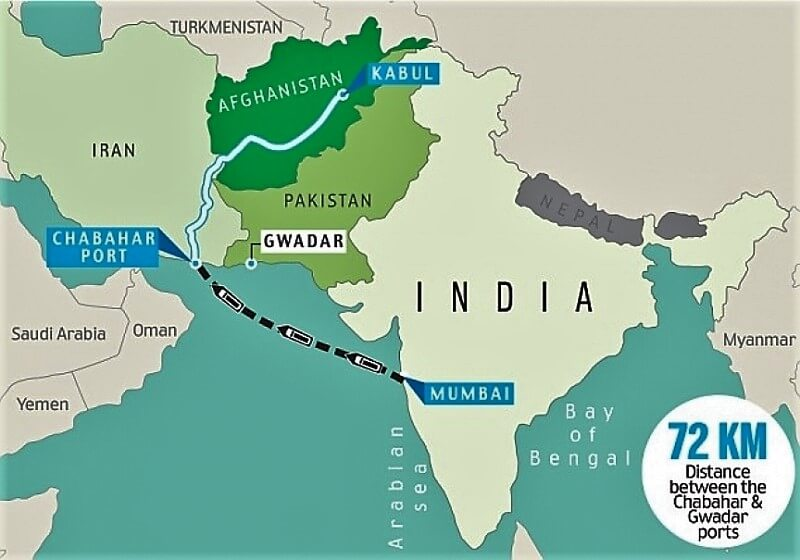
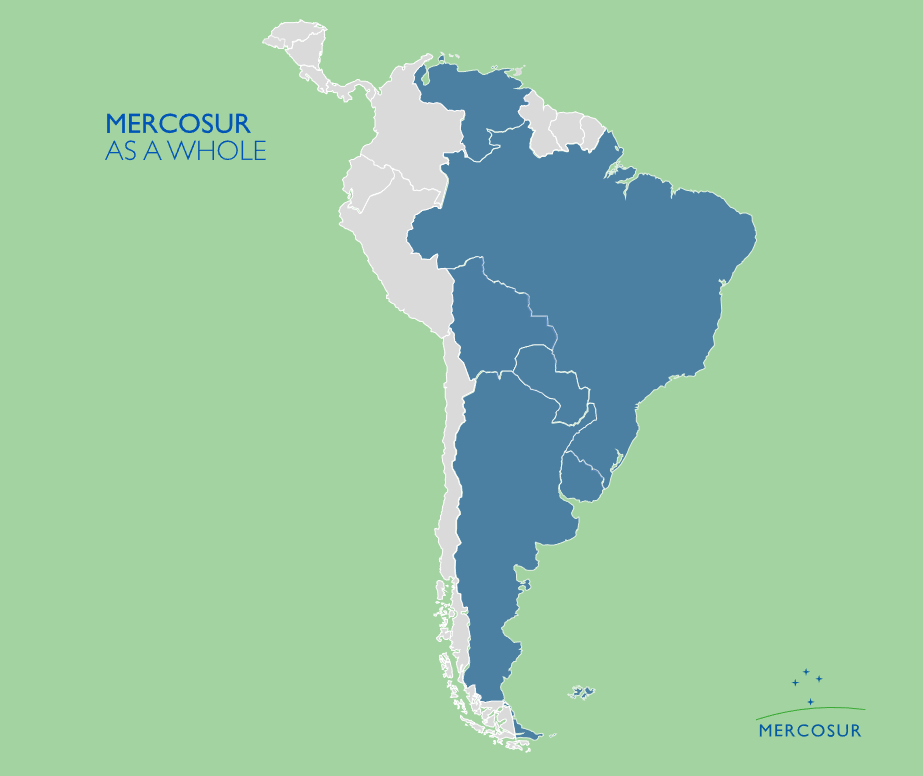
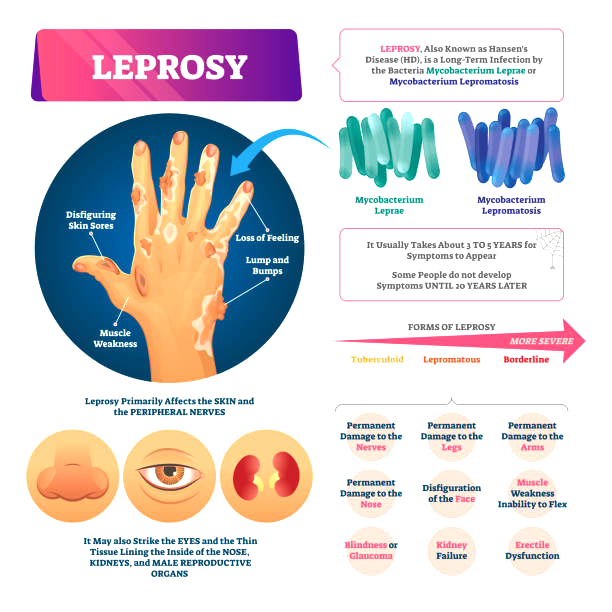
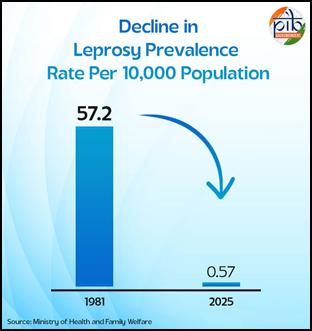
.png)
